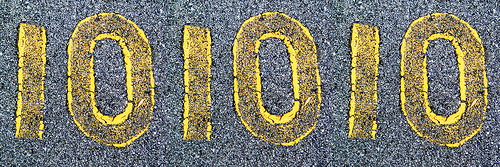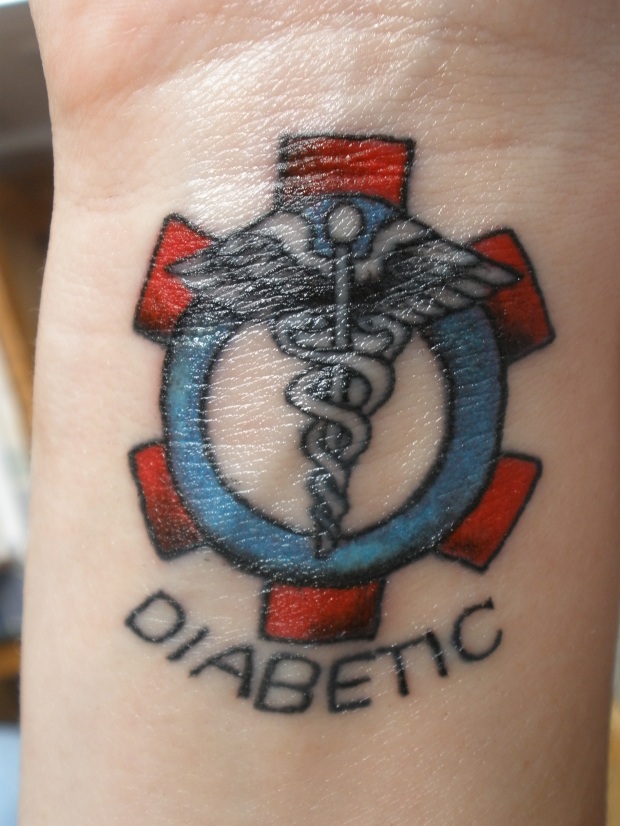It can be extremely difficult to get an insurance company to cover the costs of continuous glucose monitoring (CGM) systems. The excuses that these holdout insurance companies provide as to why they don’t want to cover CGM are becoming less justifiable thanks to research and advancements in the way we think about the needs of people living with diabetes. This is why I am a Diabetes Advocate.
So far in 2014, I have only been able to get four Dexcom continuous glucose monitor sensors out of my health insurance company. Four sensors is a one month supply. It is now July. That means for five months out of this year (so far) I have not been able to wear my CGM or benefit from the data that it gives me and the alarms that it uses to tell me when my blood sugar is dropping too low or rising too high. Each time I try to get more CGM sensors, I have to restart the approval process with my insurance company, spend weeks going back and forth between Dexcom, my endo, and insurance trying to get all of the documentation together to submit for approval, just to be denied because either Dexcom isn’t a preferred provider, or because the insurance company has decided that there isn’t enough evidence to support that CGM is a benefit and results in better control of diabetes. So then I appeal. And I know there are many, many other people struggling with getting CGM coverage by their health insurance just like I am.
This is also why I am a medical librarian. Challenge accepted, health insurance industry. Bring it on.
The most dangerous side effect of insulin is hypoglycemia, or risk of dangerous low blood sugars. The ability of CGM systems to alarm and notify a person with diabetes is one of the most valuable and beneficial advances in diabetes technology ever. EVER. The fact that there are small devices now that can warn us, as if to say, “Hey dude, your blood sugar is dropping. It might be a good idea to get a snack or something,” is incredible. This is an incredible benefit to people with diabetes so that they don’t get in a dangerous situation with a low blood sugar that can leave them incapacitated, unconscious, or possibly even dead if it happens in the middle of the night while they are asleep. Do you know how health insurance companies make money off of a dead person with diabetes? They don’t.
CGM technology benefits insurance companies too. It is incredibly cheaper to provide the technology that will alarm and cue someone to get a sandwich, a juice box, or a Level gel to get their blood sugar up on an ongoing basis than it is to pay for home or work visits by paramedics, rides in the back of an ambulance, hours in an emergency room, and likely overnight stays in the hospital depending on the severity of the lows. A low blood sugar can happen at any time, and is usually unpredictable based on varying amounts of food, activity, stress, varying absorption rates of body tissue from one spot to the next, and any other factor in life that can cause any amount of change. Sometimes they happen for seemingly no reason at all, and therein lies the danger.
How about…
…a systematic review from 2012 that concludes, “There are indications that higher compliance of wearing the CGM device improves glycosylated haemoglobin A1c level (HbA1c) to a larger extent.”
http://onlinelibrary.wiley.com/doi/10.1002/14651858.CD008101.pub2/abstract
…the research that concludes, “CGM with intensive insulin therapy appears to be cost-effective relative to SMBG [self-monitoring of blood glucose] and other societal health interventions.”
…the research that finds that regardless of prescription approach, “…patient-led and physician-driven prescription. Both modes of using CGM provide similar long-term metabolic improvement.”
…the one with early analysis of cost-effectiveness of CGM that says…well, I’ll just let is speak for itself. “…the overall quality-of-life effect of CGM arises from its ability to both improve the immediate quality of life of diabetic patients as well as reduce future complications through enhanced glycemic management.” But wait, there’s more! “The provision of greater glucose control data may have improved the quality of life of patients by facilitating decisions related to food intake and insulin regimens as well as by reducing the risks and fears of hypoglycemia.”
…real-world benefits of CGM. “Personal CGM, in a real-world setting, improves glucose control and reduces the rate of severe hypoglycemic episodes.”
This is only a start. There is more research out there, and more research on the way that shows the benefits of CGM on the lives of people who use insulin to manage their diabetes. It is time for health insurance companies to get with the program, and it is time for us to speak up and shout from the rooftops what we need, and make it happen. Some health insurance companies are better than others (PPOs tend to be more willing to cover CGM than HMOs, for example). Until coverage of CGM is non-negotiable, our work as advocates for our own health and well-being is not done. We should not have to beg and plead to get this widely accepted diabetes technology that has already been and continues to be proven to improve and save lives. Coverage of CGM should be non-negotiable, expected, and mandatory.
Now that we are staring down the barrel of the potential for the bionic pancreas in a few more years, the need for CGM acceptance by insurance companies is only going to grow. Without insurance companies accepting that CGM is indeed a good idea for people with diabetes, and without insurance companies making CGM technology accessible without the barriers and complicated processes of getting approval, and without more research documenting the cost benefits and effectiveness of CGM versus emergency responses to hypoglycemic episodes (low BGs), the bionic pancreas will never make it past the prototype phase. And we need this forthcoming technology that the bionic pancreas, and the research behind it, provides.
I’m tired. I’m so very tired. I’m tired of living every single day and running every decision that I make through a diabetes filter. I’m tired of having to prick my finger before I leave for work in the morning to make sure that my blood sugar level is okay for me to be able to drive. I’m tired of checking before meetings to make sure that my blood sugar isn’t dropping, for no other reason than so that I don’t get caught in the middle of a meeting not making sense because my blood sugar dropped too low. I’m tired of having to check before I put any bite of food in my mouth, and then having to check an hour or two after to see if that food and the insulin that I took to cover it worked the way that I thought it would. Sometimes it does, and sometimes it doesn’t. Most of the time it defies explanation. I’m tired of having to decide if I get to go to the gym and workout today based on what my blood sugar is right before I go. I’m tired of having to check so that I can drive home. I’m tired of having to check before I can go to bed. I’m tired of not being able to go to bed because I did check, and having to wait for my blood sugar to go up or come down.
I’m tired. I’m tired of the hassle. I’m tired of the bullshit. I use that word because that is just how tired of it I am. I don’t have pipedreams of a cure for diabetes. I’ve had diabetes for 33 years. It’s all I know, and all I have ever had to deal with, and I don’t walk around with imaginary hope that a cure is coming in five years, ten years, or even necessarily in my lifetime. I hope it does. Maybe it will, but short of a scientific breakthrough, I don’t feel like that is the best place for me to invest my energy. In this age of technological advancements, this age full of the smartest people that have ever lived on this planet, and this age where people are open to change and progress and opportunity, I want to be able to rest my mind when it comes to diabetes. Let’s work together to support things like the bionic pancreas, CGM coverage by insurance companies, and these things that simply make life with diabetes easier and better.
I don’t feel like making life easier with diabetes is really asking too much. If you think it is, then you try it. See if you can make it 33 years counting fingerpricks, carbohydrates, activity levels, insulin doses, times you’ve found yourself in a room waking up and not knowing where you are because of a severe low blood sugar, a tongue chewed up from a low blood sugar seizure, bruises that you don’t know how you got, and cracked ribs from the physical exertion of just trying to survive that low. Survive that, and then I dare you to tell me how CGM isn’t effective and isn’t necessary.
I double arrows down dare you.

Update, 7/30/2014:
I am so fortunate to have received a few sensors from other PWD who had the extras to spare. Thank you! You know who you are, and you have been a big help (he types, as he is recovering from a BG of 39 and still a little shaky). I received a call from Dexcom this afternoon, confirming that they finally got all of the pieces that they needed with insurance approval and documentation from my endo, and they are overnighting me new sensors. Yay! It took 7 months, which is ridiculous, but people with diabetes are experts at being stubborn and steadfast until we get what we need (*cough* bionic pancreas *cough* encapsulation *cough* smart insulin). So thankful that it appears to have finally been worked out. Ciao for now! (Did I really just type “Ciao for now!”? I must still be low…)
Update, 8/21/2014:
Order got delayed, again, before it could be shipped to me. Today I finally received a 90-day supply of Dexcom sensors, allegedly with auto-renew when I need more. Still not clear on what took so long, aside from the explanation from my Dexcom rep that it was dramatically delayed by all of the authorizations required in order for insurance to approve. I’d demand more of an explanation, but it’s been a long battle, and I’m tired. Glad to finally have CGM data again, even if it did take 8 months longer than it should have.





































